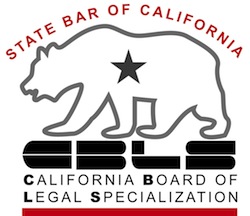Got private student loans?
I’ve got good news and bad news.
Bad news first.
Private Student Loans Inflexible
Private student loans have no built in mechanisms for deferment and forbearances, like government-backed loans do.
There are no income based repayment plans, as there are with federal student loans.’ No “outs” for disability or schools that close and leave you stranded.
No discharge in bankruptcy.
So, regardless of what life hands you, you have to pay according to the terms of the note.
But I promised you some good news.
Private Student Loans Must Play By The Rules
The promising news is that private student loans are hardy different in the eyes of the law than credit cards. That makes them subject to all the rules about collection that apply to any other debt.
One of those rules is timeliness. Lawyers call it the statute of limitations.
The rule essentially says that a creditor who isn’t being paid must sue within a fixed period, or lose the right to use the courts to enforce its debt.
The statute of limitations doesn’t prevent a debt collector for a private student loan lender from using all the usual tools of collection: fear, shame, and annoyance.
It just means they can’t win in court. Or, more precisely, they can’t win if you show up in court and assert the statute of limitations.
And “showing up” doesn’t mean appearing at the first hearing. It means filing a written answer with the court on time. The statute of limitations is an affirmative defense that has to be asserted in your answer.
California Code of Civil Procedure 458 sets out how the statute of limitations is to be pled:
458. In pleading the Statute of Limitations it is not necessary to state the facts showing the defense, but it may be stated generally that the cause of action is barred by the provisions of Section ____ (giving the number of the section and subdivision thereof, if it is so divided, relied upon) of THE CODE OF CIVIL PROCEDURE; and if such allegation be controverted, the party pleading must establish, on the trial, the facts showing that the cause of action is so barred.
Which statute of limitations applies
Generally, the law of the state in which you now live supplies the statute of limitations.
The substantive law may be specified in the promissory note. The period in which that law applies come from the state of the borrowers residence when sued.
When the statute starts running
The clock starts ticking on the statute when the last payment on the debt is made. To get beyond the limitations period, the requisite time must run without payment.
The law of some states resets the statute of limitations additionally if you acknowledge the debt as yours or if you make a promise to pay it.
California’s rule is narrower. Only a written promise to pay signed by the borrower or payment resets the clock.
360. No acknowledgment or promise is sufficient evidence of a new
or continuing contract, by which to take the case out of the
operation of this title, unless the same is contained in some
writing, signed by the party to be charged thereby, provided that any
payment on account of principal or interest due on a promissory note
made by the party to be charged shall be deemed a sufficient
acknowledgment or promise of a continuing contract to stop, from time
to time as any such payment is made, the running of the time within
which an action may be commenced upon the principal sum…
Ever been cajoled by a debt collector to make a “good faith payment” on the debt he’s trying to collect? See what he’s trying to accomplish? Make a payment and you are back to square one on the statute of limitations front!
There’s another provision of CCP 360 that’s important here. If the statute of limitations has already run, payment does not revive the debt and make it enforceable again.
Other rules, federal and state, apply to private student loan lenders and their collectors.
More
Public service can cancel student loans
Congress considers making student loans dischargeable
Image by taxrebate.org.uk






